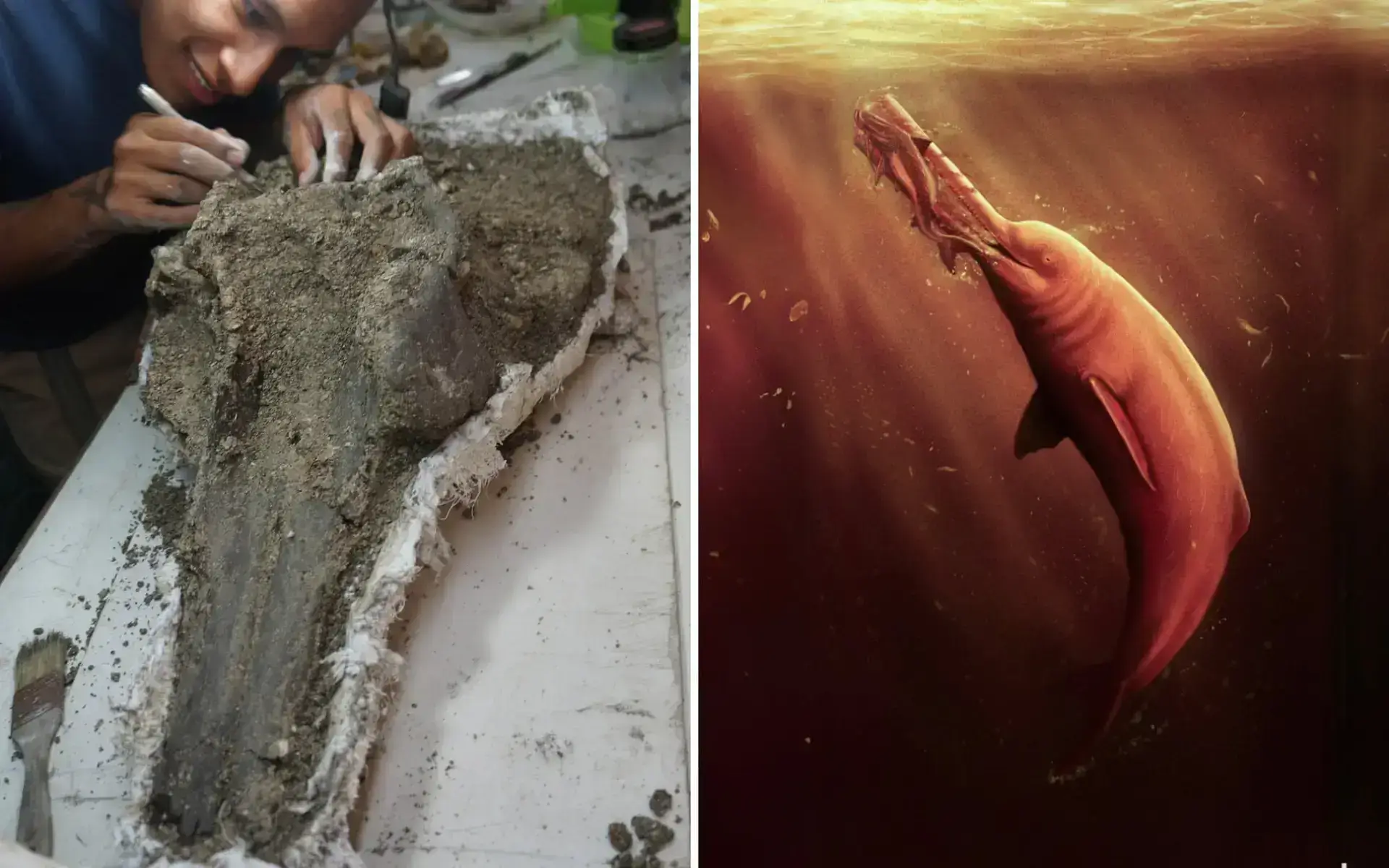
IMG SOURCE: theguardian.com
In 2018, a young undergraduate student named Aldo Benites-Palomino unearthed a fossil unlike any other. It was the fossilised skull of a giant river dolphin that swam in the Amazonian rivers 16 million years ago.
This extinct species, named Pebanista yacuruna, measured up to 3.5 meters long, making it the largest river dolphin ever discovered. It was a member of the Platanistoidea family, a group of dolphins that thrived in oceans between 24 and 16 million years ago.
According to the study published in Science Advances, Pebanista yacuruna belonged to the Platanistoidea family. This family of dolphins was common in oceans between 24 and 16 million years ago.
The surviving river dolphins are remnants of what were once greatly diverse marine dolphin groups. These marine groups are believed to have left the oceans to seek new food sources in freshwater rivers.
What makes Pebanista yacuruna stand out is not just its size but also the fact that it has no links to the river dolphins that currently inhabit its former waters. The closest living relative to this prehistoric giant is found 10,000km away in South-East Asia.
Today’s river dolphins face similar extinction threats that Pebanista yacuruna likely faced millions of years ago. Urban development, pollution, and mining activities pose significant risks to these species.
“Rivers are the escape valve… for the ancient fossil we found, and it is the same for all river dolphins living today.” – Aldo Benites-Palomino
The Yangtze river dolphin has already succumbed to these threats and gone extinct.
The work of Aldo Benites-Palomino and his fellow paleontologists continues to shed light on our planet’s past. Despite the challenges posed by the pandemic, their research has led to more incredible finds such as this one.
